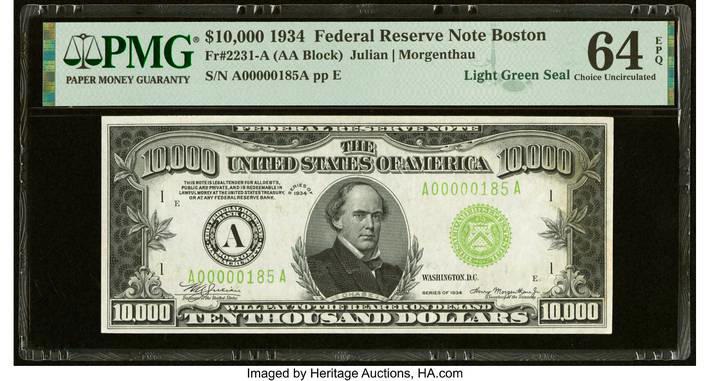Rare $10,000 Bill from 1934 Sold for $480,000 in Auction
A $10,000 bill from 1934 was recently auctioned off for an impressive $480,000 (approximately R$2.37 million) at an event organized by Heritage Auctions, a renowned auction house based in Dallas, Texas, United States. Today, $10,000 is equivalent to about R$49,325.
According to the description on the Heritage Auctions website, this Federal Reserve note received certification from the Paper Money Guaranty (PMG) and was classified as Exceptional Paper Quality (EPQ), indicating exceptional paper quality in Portuguese.
The auction house, which expected the item to fetch over $300,000, stated that the final price was not a surprise, considering the consistent interest in high-denomination notes. “Notes with large denominations have always attracted collectors’ interest at all levels,” said Dustin Johnston, Vice President of Currency at Heritage Auctions, in a statement.
According to the Museum of American Finance, the $10,000 bill featuring the portrait of Salmon P. Chase, Secretary of the Treasury during President Abraham Lincoln’s administration, was the largest denomination of American currency to circulate publicly in the United States.
Although a $100,000 bill with the portrait of President Woodrow Wilson was also issued in the country, its purpose was solely for transferring funds between Federal Reserve banks. The highest denomination bill in circulation in the United States since 1969 remains the $100 bill, as stated by the museum.
The rarity and historical significance of these large-denomination bills make them highly sought after by collectors worldwide. The sale of the $10,000 bill for such a considerable sum showcases the enduring appeal and value of these educational pieces of currency history.













































